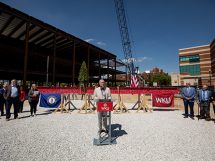Only 23 percent of part-time workers had available benefits
WASHINGTON (July 25, 2014) — Employer-provided medical care was available to 86 percent of full-time private industry workers in the United States in March 2014, the U.S. Bureau of Labor Statistics reported today. By contrast, only 23 percent of part-time workers had medical care benefits available. Access, or availability, also varied by establishment size: 57 percent for workers in small establishments (those with fewer than 100 employees), compared with 84 percent in medium and large establishments (those with 100 employees or more).

Retirement benefits followed a similar pattern as medical care benefits. In private industry, 74 percent of full-time workers had access to a retirement plan, significantly higher than 37 percent of part-time workers. Retirement benefits were available to 50 percent of workers in small establishments and 82 percent of workers in medium and large establishments. A worker with access to a medical or retirement plan is defined as having an employer-provided plan available for use, regardless of the decision to enroll or participate in the plan.
Paid sick leave benefits were also more commonly offered to full-time workers and those in medium and large establishments in private industry. Plans were offered to 74 percent of full-time workers and 24 percent of part-time workers. Similarly, 52 percent of workers in small establishments and 72 percent in medium and large establishments had access to a paid sick leave benefit.
These data are from the National Compensation Survey (NCS), which provides comprehensive measures of compensation cost levels and trends as well as incidence and provisions of employee benefit plans.
Additional findings include:
- In private industry, 65 percent of employees had access to retirement benefits and 48 percent of employees participated in retirement plans. In state and local government, 89 percent of employees had access and 81 percent participated in retirement plans.
- Almost all full-time workers in state and local government (99 percent) had access to retirement and medical care benefits. For state and local government part-time workers, 38 percent had access to retirement benefits and 24 percent had access to medical care benefits.
- For private industry employees in the lowest 10 percent of average earnings, employers paid 70 percent of the single coverage medical plan premium. For employees in the highest 10 percent of average earnings, the employer share of the premium was 81 percent. For family coverage, the employer share of the premium was 57 percent for employees in the lowest 10 percent of earnings, significantly less than the 72 percent for employees in the highest 10 percent of earnings.
- Access and participation in life insurance benefits varied significantly for full-time and part-time workers. In private industry, 72 percent of full-time workers had access to life insurance benefits. In contrast, only 13 percent of part-time workers in private industry had access. For state and local government workers, 90 percent of full-time workers and 22 percent of part-time workers had access. Most workers who had access participated in life insurance benefits.
- Paid holidays were provided to 90 percent of full-time and 37 percent of part-time workers in private industry. In state and local government 74 percent of full-time workers and 30 percent of part-time workers had access.
More information can be obtained visiting bls.gov/ebs.




















Add Comment